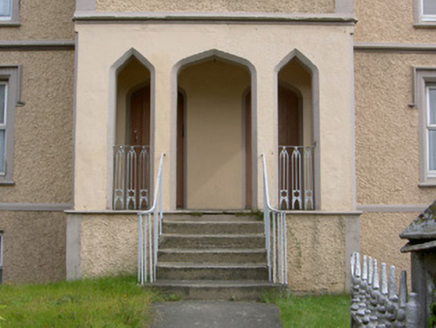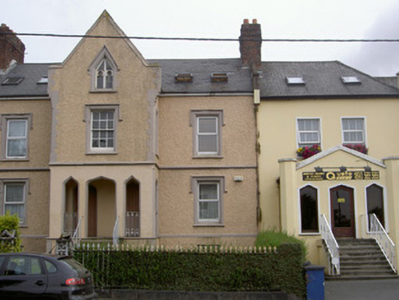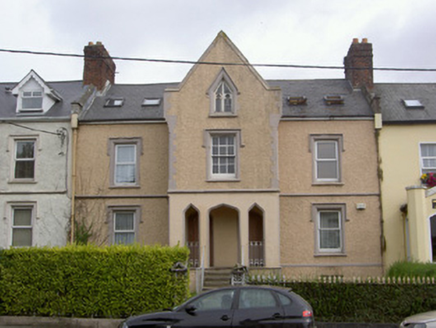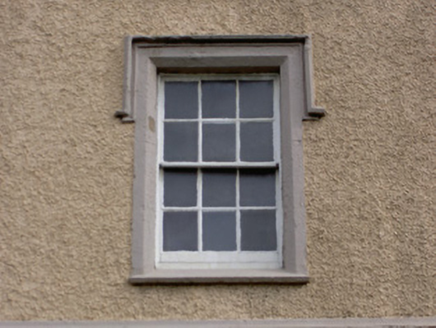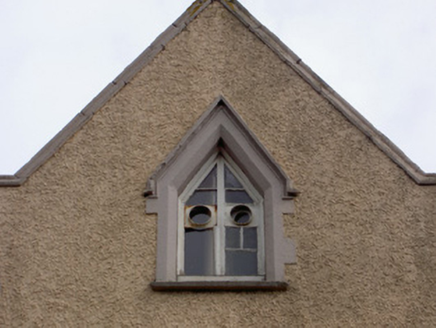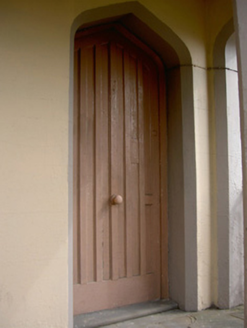Survey Data
Reg No
13707002
Rating
Regional
Categories of Special Interest
Architectural, Artistic, Historical
Original Use
House
In Use As
House
Date
1830 - 1835
Coordinates
304560, 306669
Date Recorded
04/08/2005
Date Updated
--/--/--
Description
Terraced one-and-a-half-bay two-storey over basement with attic house, dated 1834. Full-height gabled projecting bay shared with house to west. Pitched slate roofs, clay ridge tiles, red brick corbelled chimneystack, rendered fractables with roll-top limestone coping to east and south gable, lead flashing to valleys, rooflights, moulded cast-iron gutter on painted timber fascia, circular cast-iron downpipe. Painted roughcast rendered walling, moulded string courses, painted stone coping to basement, rendered quoins to gabled-bay topped by moulded kneeler. Square-headed window openings, splayed smooth render surrounds, hood mouldings, painted splayed sills, uPVC windows; painted timber hornless six-over-six sliding sash window to first floor; pointed arch window opening to attic, painted timber casement window. Smooth rendered engaged porch to gabled-bay, stop-chamfered corners, Tudor arch entrance with chamfered reveals flanked by pointed openings with cast-iron guard rails, limestone slabs to platform, approached by stone steps, wrought-iron hand railing; Tudor arch door opening to interior, chamfered reveals, painted timber vertically-sheeted door; square-headed door opening to basement to east accessed by flight of steps. Set within shared garden to south, concrete path, bounded by dressed ashlar stone plinth with cast-iron railings, piers and gates, tooled limestone threshold to gateway.
Appraisal
Built in 1834, by Thomas Smith, also architect of Louth Hospital, this terraced house, built as a pair with the house to its west, displays an interesting symmetrical design, which is highlighted by the gabled-bay. The use of simple decoration is effective, leading to an uncluttered façade, yet relieving the otherwise austere facade. The shared porch with its Tudor-influenced openings is particularly noteworthy, while the intricate ironmongery adds artistic significance.
